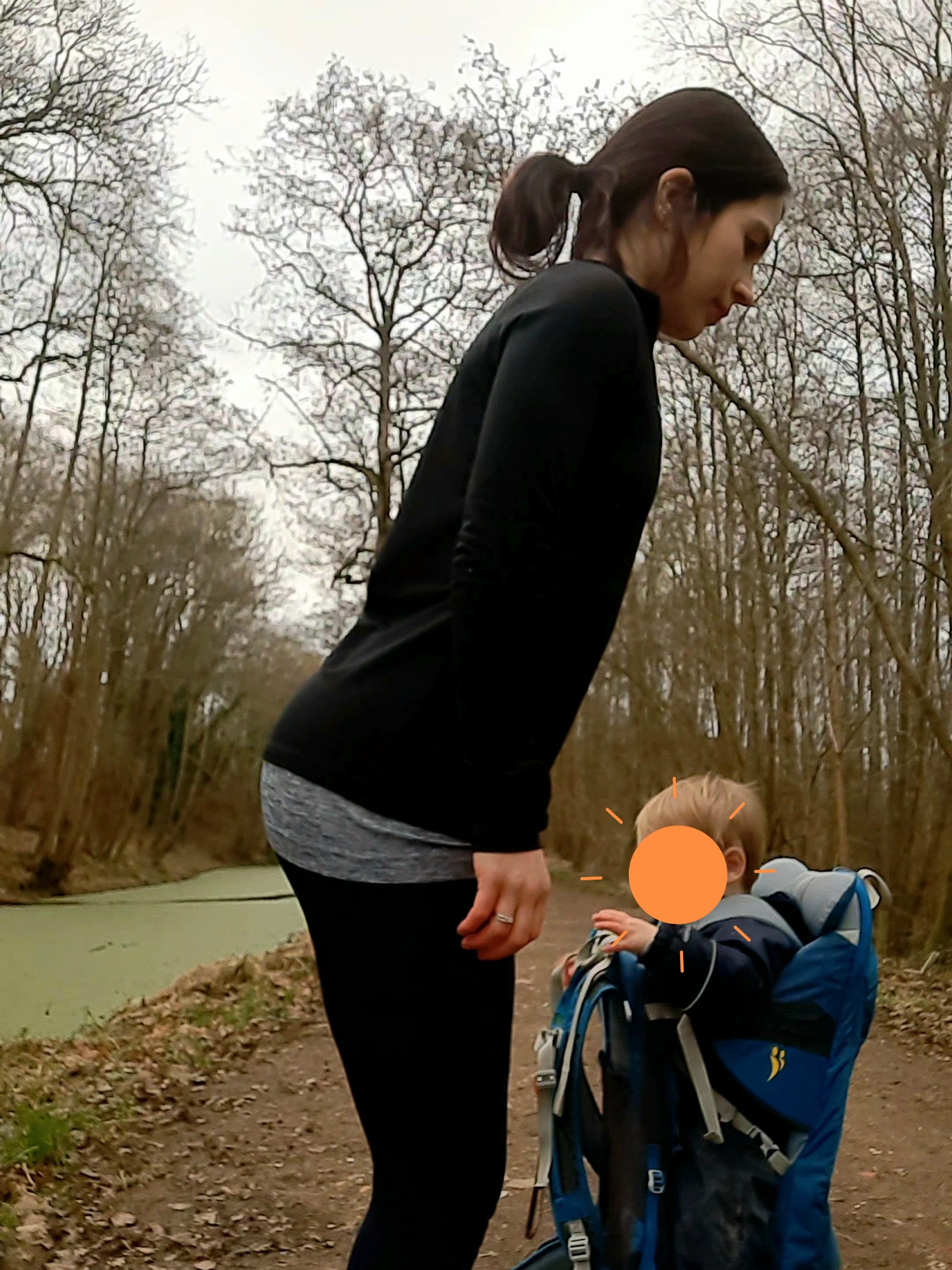Why posture matters when baby carrying
Posture, we hear it a lot.
But what is it and why does it actually matter when baby carrying?
Posture is the alignment of your spine and body that is ideal for you. We all have natural curves in our spine, but they are different for everyone. Your posture should enable you to perform every day tasks without any pain or discomfort.
Ideally, this would also allow the right muscles to be working when they need to, and not over compensate due to muscular imbalances or weaknesses.
Posture types
Now, there are a few types of posture that aren’t ideal, especially long-term.
Let’s go through them:
Neutral Spine
This is the ideal position for our spine and body that is unique to us. Ideally the spine has a natural ‘S’ shape curvature to absorb shock impact, the pelvis is level, (not tilted too far forward or backward) and your eyes and chin are parallel to the floor
Lordosis
This is an excessive curvature in the lumbar spine (lower back). This can lead to muscular imbalances surrounding the pelvis, as the anterior muscles become lengthened and the posterior ones become shortened and tight
Kyphosis
Is a an excessive curvature in the thoracic spine (upper back) that can sometimes look like really hunched shoulders. This can become exaggerated through sedentary lifestyle factors. Muscular imbalances occur in the chest and and back area as the trapezius can become weaker and longer, and the pectorals become tighter and shorter
Scoliosis
This is a complex posture type as it is where the spine has curves or twists/rotates more than is needed. It may be described as a C or S curve when looking at the spine
Swayback
Again may be exaggerated by lifestyle factors, such as high heel shoes, and is where the pelvis has a posterior tilt combined with kyphosis
Flatback
This posture is typically thought of as the spine being straight, so flat. The head may protrude further forward more than usual, the lumbar spine has less curvature and is combined with a slight lean forward from the hips
When you know what posture type you have, it is helpful to know if you have any muscular imbalances, any pain or discomfort doing certain activities/exercises and how you feel when carrying load.
Aiming for neutral posture when performing everyday activities, or hiking, baby carrying, playing sports etc. will help to reduce the stress that is placed on the spine and help to reduce the risk of injury prevention and enhance longevity.
Whilst baby carrying, you may also experience:
Leaning forwards - leaning too far forward at the hips, so the shoulders are closer to the floor than normal
Leaning backwards - leaning too far backward at the hips, so again the shoulders are closer to the floor than normal
Whilst baby carrying, more load, so more demand, is being placed on your body than normal, so your posture is even more important. When more load is placed on your body, you still want the ‘right’ muscles to be working, without any imbalances or stronger muscles trying to overcompensate for weaker muscles. To learn about core exercises that can help you develop your core strength, read here.
When baby carrying for long periods of time, some people may begin to experience strain around their shoulders and neck area, hips and lower back. These are areas that tend to have muscular imbalances due to postural alignment, so it really important that the muscles are doing their job effectively and helping to maintain our neutral posture. (However, strain can also be caused by the carrier/straps not being adjusted to the needed position).
Additionally, the posture you have will affect how your baby sits in the carrier you are using.
Ultimately, it is ideal for your baby to be high up in the carrier, with their airways clearly visible, their hips to be in a deep “M” position, a gentle “J” shaped spine. This can be achieved when you are in your ideal posture.
If your posture becomes slumped or changes, your baby’ posture will too.
When you are baby carrying next, try to feel your posture before, during and after, and see if it feels similar, or different to you. Even better, take pictures or videos for feedback.
If you do experience pain when baby carrying, I urge you to seek medical advice.
If you are looking for exercises that will help you get stronger for baby carrying, try these.
Happy walking and baby carrying!







